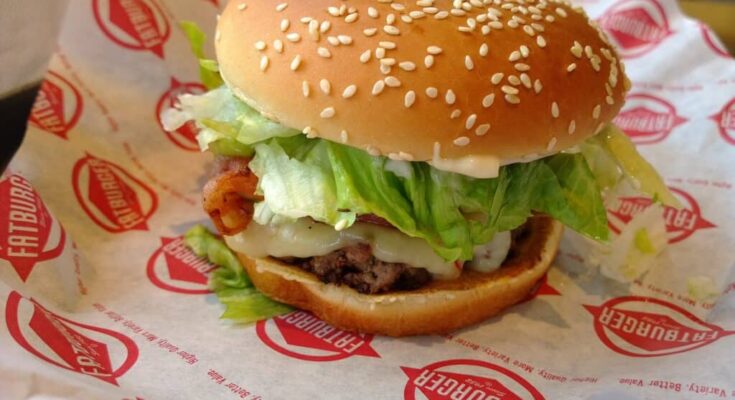
Fast food has been the most convenient solution in the fast-paced world in which we live mainly because it used to be quite affordable and easy to get. Yet, fast food has now become expensive due to the high cost of beef.
The late 20th and early 21st century was the age of cheap food. Aside from the convenience and affordability, in the past decades, fast food restaurants were a part of social life for young people. In urban areas, fast food restaurants were places where youngsters could meet and socialize without spending all of their allowance.
For Americans, a visit to a fast food joint was a frequent occurrence. However, this is no longer the case worldwide since a number of such restaurants, including McDonald’s, belong to multinational chains. In other words, fast food has become unaffordable. A meal in a fast food restaurant has become a “luxury” even for mid-income families it seems.
Nonetheless, it is not only fast food prices that have gotten steeper. Eating out in general has become unaffordable for most. Of course, it is more obvious that food costs have increased dramatically at fast food chains. This is because, firstly, we frequent such places more so and, secondly, we are more likely to come across advertisements from them. We tend to be less aware of such changes at smaller establishments.
Why is enjoying a fast food burger now a luxury?
In a survey of 2,000 American adults conducted by LendingTree, the results show that three out of four Americans typically have fast food once a week, and 62 percent said they eat out less due to rising prices. Furthermore, increasing costs on menus in fast food restaurants came as a surprise to 65 percent of Americans, according to respondents.
Almost 80 percent of respondents consider fast food a luxury good due to high prices caused by inflation, and they consequently eat out less nowadays. Half of the respondents said they view fast food as a luxury specifically because they’re struggling financially. In the group of respondents making less than $30,000, 71 percent considered fast food a luxury, as did 58 percent of parents with young children.
However, it is not only low income families that eat out less. In fact, 52 percent of Americans making $100,000 or more a year said they also visit fast food places less often.
A common consumer explanation of the past two years’ rapid rise in fast food prices is corporate greed. If we refer back to the McDonald’s example once again, however, this explanation is actually unrealistic. Would this mean that company executives of past decades were not greedy? Did they suddenly decide to dramatically increase prices just for additional profit? Wouldn’t they fear they would lose customers and tarnish the brand name of a fast food chain?
In fact, the reason fast food prices skyrocketed is not that simple. In the second quarter of 2024, the average price of a burger at a fast food restaurant was $8.41. This is up by 16 percent from five years ago, according to food consultancy data. Even at McDonald’s, the average price of a single Big Mac in June was $5.29, a 21 percent increase from 2019. Burgers have now become expensive enough that low income consumers have cut back on their visits to fast food establishments. This has led to the first drop in McDonald’s sales in four years, according to the latest quarterly results.
The explanation is in the meat
The problem is actually much more complicated and is not related to fast food, but to beef, a Bloomberg report says. The average retail price per pound for ground beef in US cities in August was $5.58 per pound, a record high reflecting historically low US cattle herd numbers, which hit a 73-year low in January.
When it becomes increasingly difficult to find pasture for herds, ranchers prefer to send animals to slaughter without replacing them. The shrinking of herds is driving prices up. Moreover, although the cost of cattle feed has dropped, higher interest rates and operating costs mean it is still too expensive for most farmers to return to raising their herds or “re-establishing” them. Thus, the number of cattle continues to decline, and the price of beef will continue to rise.
Cattle herd size—and beef prices—is a cyclical affair, dependent on both market and weather conditions. First, prices must become high enough for a producer to decide to increase his herd. Then there’s the biology of the cow, which is a painfully long cycle. The producer has to keep some breeding cows instead of sending them to slaughter. When they become pregnant, they do not give birth for another nine months.
Once the calves are born, they need at least a few months with their mothers and are then fed on the farm. Finally, they are sold to farms where they are then destined for slaughter. There they remain for up to 300 days depending on how quickly they fatten up. By the time the cow is slaughtered, it is 30 to 42 months old. (Chickens, by contrast, are slaughtered before they reach 2 months.) Because of this long process, it takes about five years for the cycle to go from low to high.
Climate change and aging farmers
Raising beef is often seen as one of the causes of climate change. However, it is also a victim of it. Hot temperatures due to climate change mean droughts are more frequent and severe, leading producers to keep herds smaller for longer and continuing the decades-long pattern of herd peaks declining with each cycle. The droughts of the past 15 years are considered among the worst in the past century. This adds to the difficulty of raising cattle.
Furthermore, the average age of farmers and ranchers in the US is 58. Older beef producers see the higher costs of raising herds and high interest rates and opt to clear their herds now and retire instead of continuing on with the business.
Meanwhile, aside from the higher cost of meat, there are additional costs that have gone up. Labor costs, for instance, follow price increases in all goods and services in the past two years.
Experts say meat prices are not expected to drop until 2030, and, even then, food costs will not return to the rates of former days.



